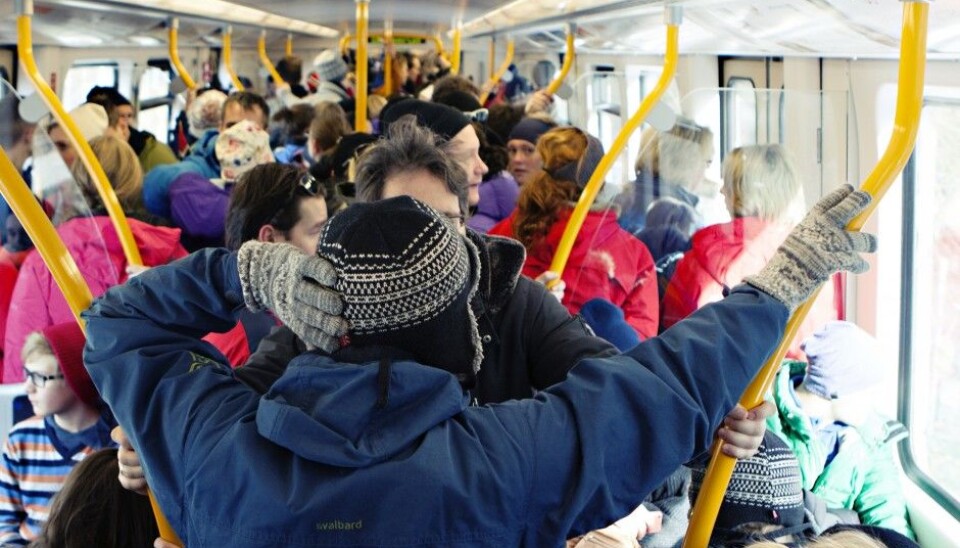
Public transport poses problems for those with mental disorders
Many of us experience mental disabilities of one kind or another in the course of life. A new study points out problems this can cause for users of public transport services.
Two challenges stand out – large crowds of people and the experience of lacking information. These were the findings by researchers at Norway’s Institute for Transport Economics (TØI).
Our society is slowly but surely making more allowances for persons with disabilities. Most of the initiatives have aimed at easing life for those with physical disabilities.
The current understanding in building codes, designs and regulations, called universal designing, predominantly targets the needs of persons with physical handicaps. This tends to be the norm in political debates, public documents and efforts to include one and all in society.
Researchers at TØI, working on an assignment from the Delta Centre of the Norwegian Directorate for Children, Youth and Family Affairs, looked into the barriers that people with mental disabilities encounter when they attempt to get from one place to another.
The TØI researchers interviewed persons with anxiety, Asperger’s Syndrome, bipolar disorder and depression.
Crowding and crowds
The researchers found that crowding and crowds are experienced as a major hindrance for persons with these mental problems who wish to use public transport. Many explained that they consciously try to avoid using trams, buses, subways and trains during rush hours.
Lack of information about the trip is another thing that hampers this segment of the public.
Digital information that tells how far away the next bus, train or tram is – called real-time information – can be provided to aid persons with mental disorders in using public transport.
People who suffer anxiety might not summon the nerve to step onto the first bus going their way. It then helps if they can see when the next bus will arrive at this stop.
Having to make one or more transfers is an obstacle for many of those interviewed. The process of standing around waiting can fuel anxieties.
Cars and trains best
Many with mental disabilities find cars to be a means of getting about nearly on a par with others, according to the researchers.
Trains are experienced as better alternatives when it comes to public transport.
Many emphasise the need for divisions or screens between seats on a train or bus.
Travelling less than others
Previous research has shown that persons with mental disabilities travel less than others.
Research has also shown that poor access to public transport leads to social isolation and aggravates symptoms. Ample access to transportation has the opposite effect.
The researchers suggest 19 practical initiatives planners can consider for the improvement of travel experiences for persons with mental disabilities.
Some if these are:
- Better space per passenger
- Seats and benches at stops and stations
- Standards for information dissemination
- Integrated information and app solutions for all transport companies
- Standards for information given by drivers
- Accessible personnel
- More frequent departures or alternative solutions with cars/taxis in rural areas
- Courses on mental health for personnel
- ID certificate cards proving need for assistance plus several other improvement and expansions of current welfare provisions related to transport costs and services
-------------------------------------
Read the Norwegian version of this article at forskning.no.
Translated by: Glenn Ostling
































